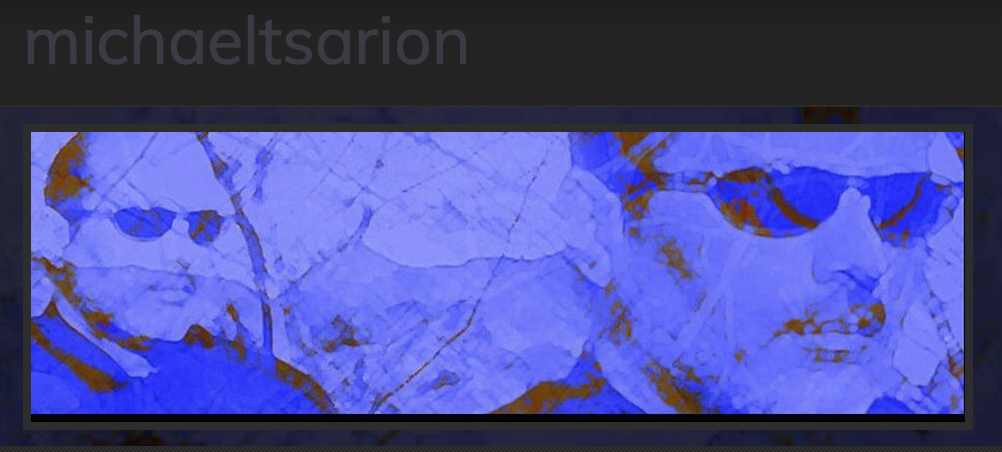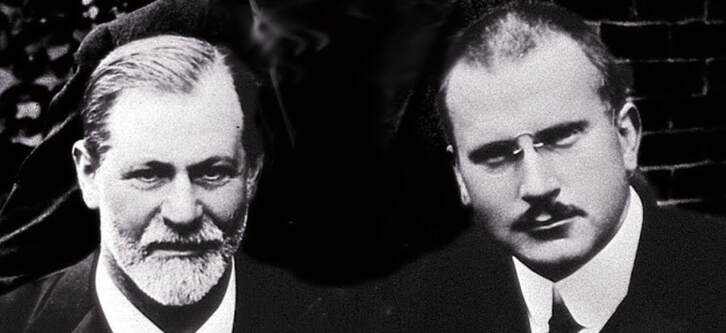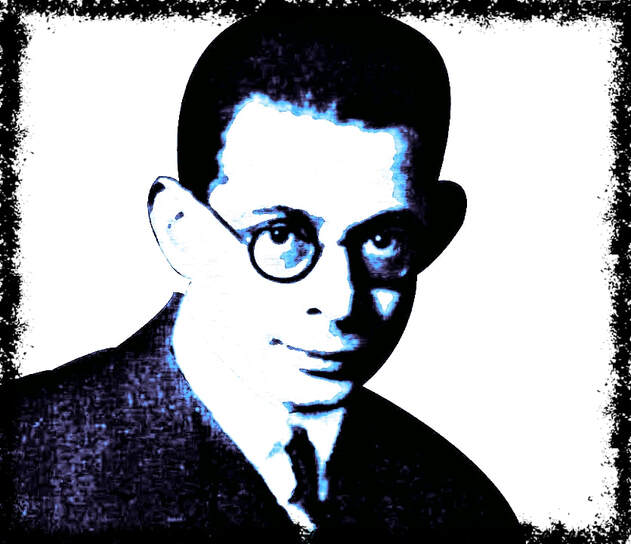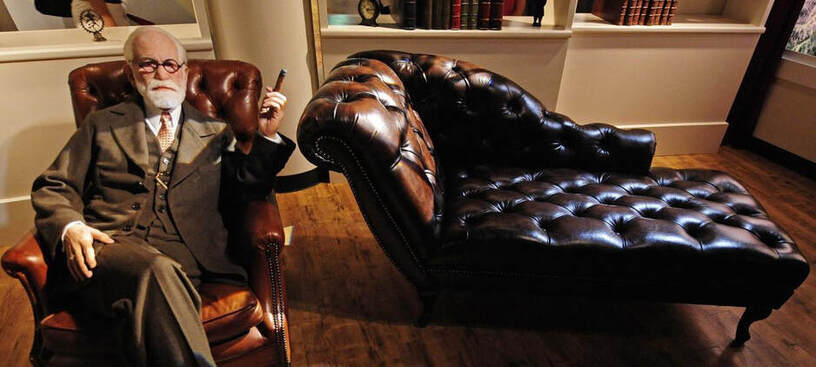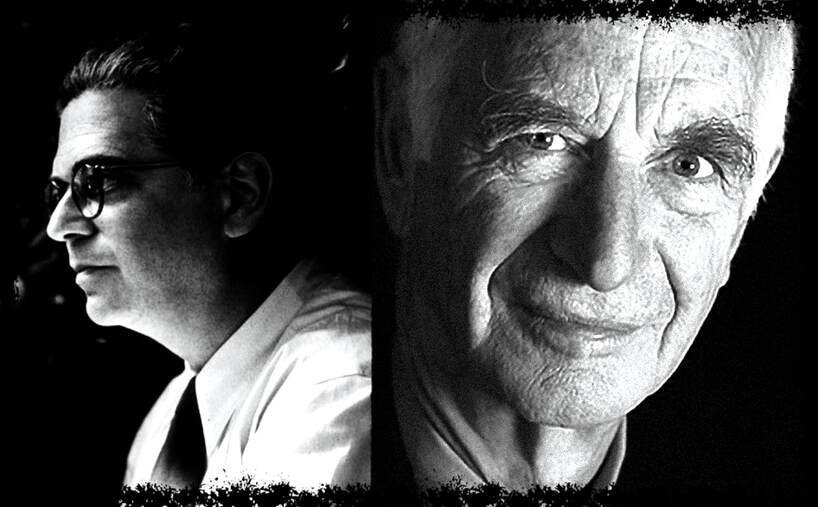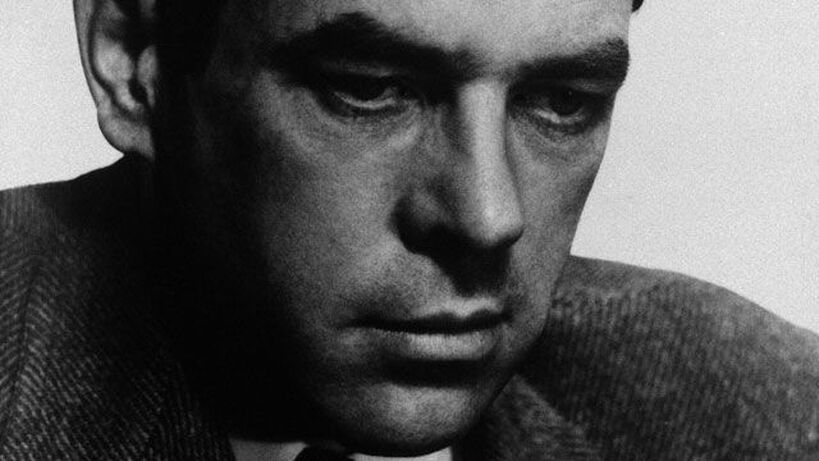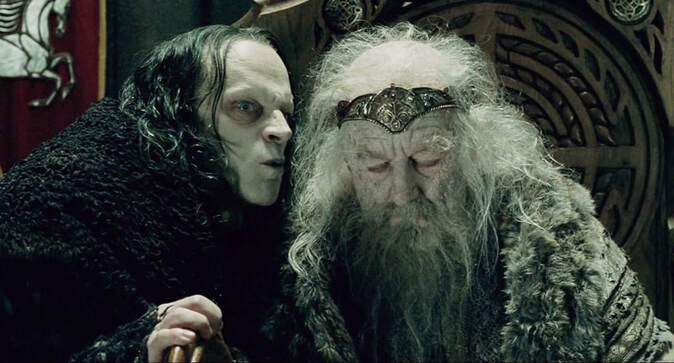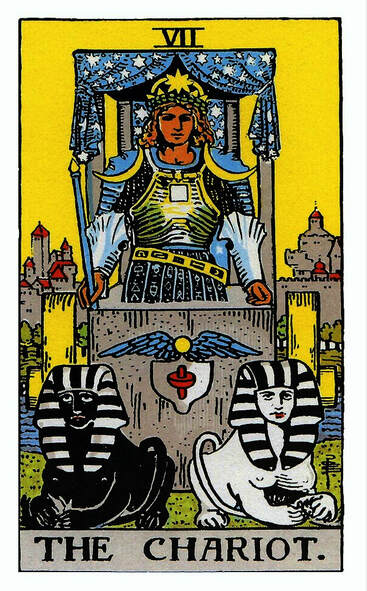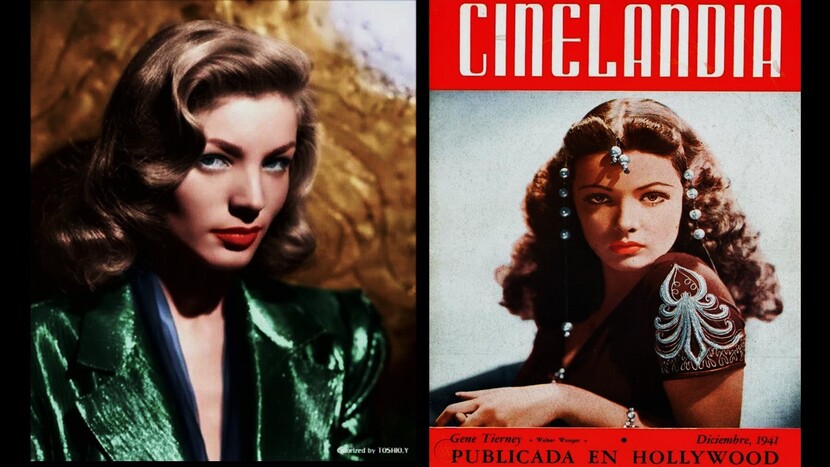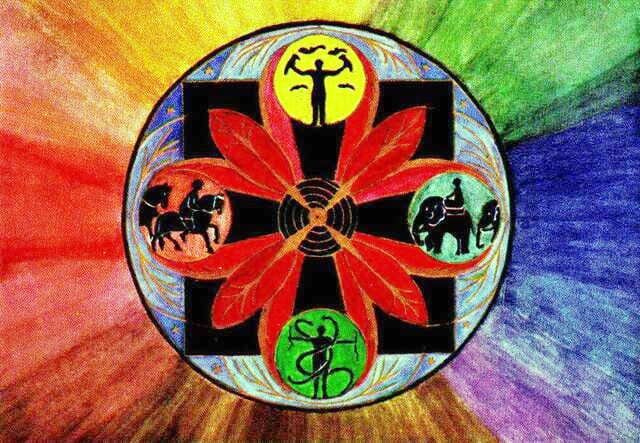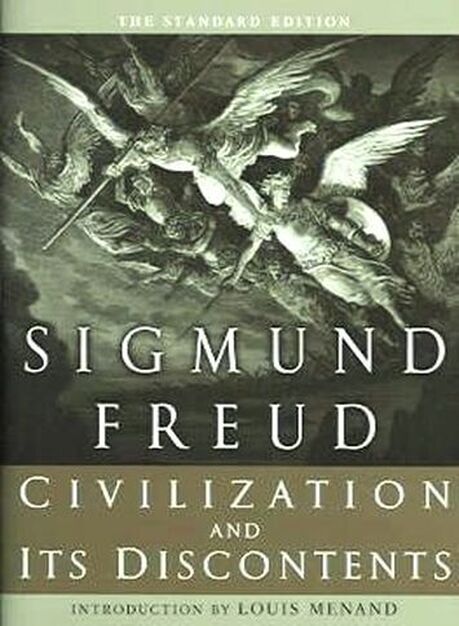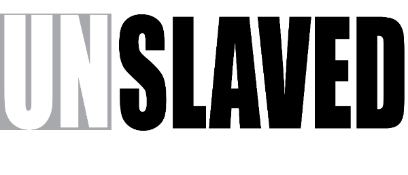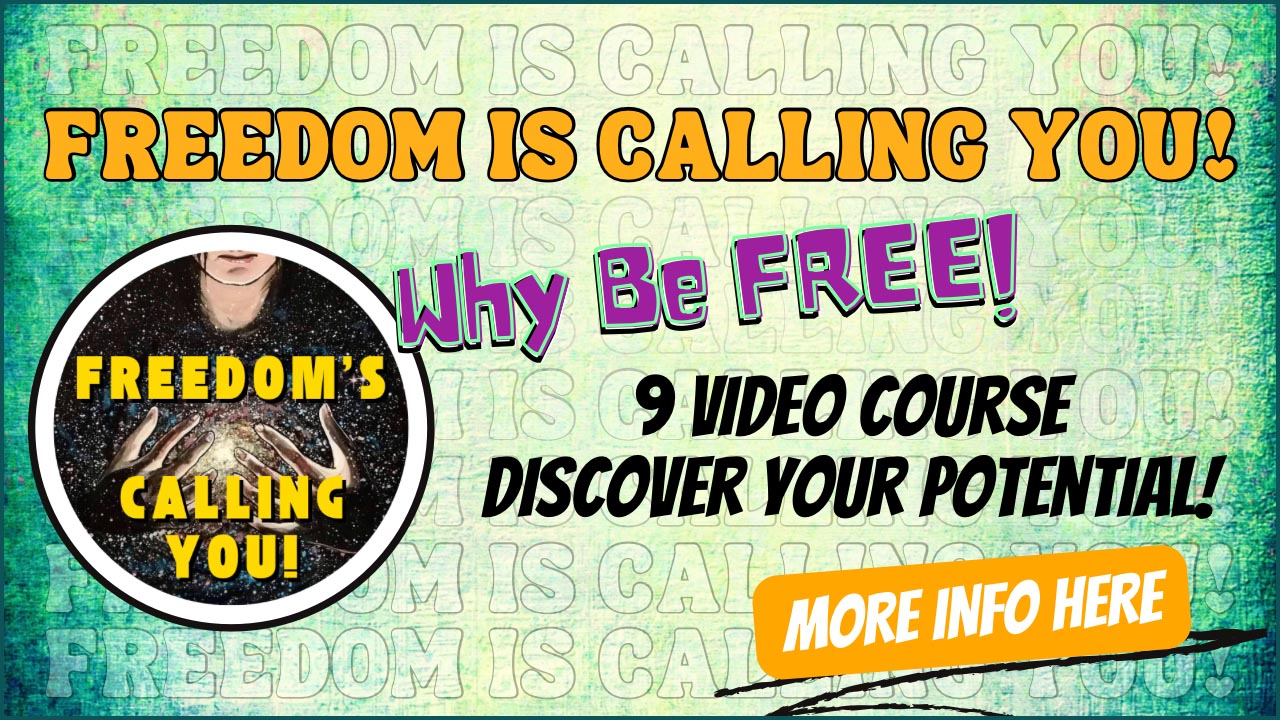JUNG & THE PSYCHE
by Michael Tsarion
Our dreams recover what the world forgets – James Hillman
There can be no doubt that the Swiss psychologist Carl Gustav Jung was one of the world’s greatest thinkers. Most professionals in the field of psychology recognize that his genius lay primarily in his insightful revisions of Sigmund Freud’s basic theories about the origin and function of the psyche. This presupposes that Jung had a thorough working understanding of his mentor’s teachings on the subject.
I will not bother rehashing the whole story of the relationship and eventual disagreements between Freud and Jung, nor allude to the genesis and evolution of Jung’s school of Analytical Psychology, since those details are available on many online sites and encyclopedias. Nor will I delve here into his complex theory of Personality Typology.
What I should like to remind modern readers about are the four major discoveries Jung detailed throughout his masterworks, namely the Collective Unconscious, the Archetypes, the process of Individuation and Objective Psyche. Separately and together they are relevant to everything happening in today’s world, on personal and social levels. Indeed, one is not off the mark when claiming that every aspect of both Freud’s and Jung’s teachings contain the answers and solutions – in total – to our chaotic world’s problems. It should fill our hearts with dread that their superlative findings should fall foul of our penchant for historical amnesia.
It should also fill us with foreboding that their work has been systematically defaced and undermined by cunning Postmodernists desperate to misrepresent their ideas.
Sigmund Freud (1856-1939) and Carl Gustav Jung (1875-1961). The introvert and the extrovert. Separating from Freud, in 1912, caused the young Carl to suffer a nervous breakdown. It was only with the greatest difficulty that he became a thinker in his own right.
Deconstructionists are particularly incensed by Jung’s corpus. This is because he had much to say about them and their anarchic agenda. Crypto-Nihilists of their kind were on the top of his personal list of world-destroyers. He knew all there was to know about their psychological typology. His writings on these anarchic desecrators of the past are perceptive and accurate.
Something had to be done, and it was. It is not wild speculation to say that, if academics have their way, we won’t have any interest in the great man’s profound work. Nor will we be in a position to mentally comprehend or physically apply the solutions he offered for our survival and wellbeing. Not after the Marcusan-Fabians are through polluting his work. Whereas Freud and Jung were interested only in healing, their enemies – the enemies of humanity – are interested only in spreading contagion which compromises our existence on all levels.
The problem does not end there. Sadly, latter-day “Jungians” are for the most part a hopeless lot. Few do justice to Jung’s work. The chief exceptions were his contemporaries Erich Neumann, James Hillman and Edward Edinger. These writers, and a few others, have dutifully honored their master’s work. But they are the exception rather than the rule. As time passed, things have worsened. Modern-day People’s Champions, such as the almighty Jordan Peterson, are poor exponents of Jung’s superlative insights.
Although there is no end to People’s Champions and popular social pundits clogging the airwaves, sadly none can be trusted to do justice to seminal thinkers of the past. Better to go straight to the originals. Men such as Freud and Jung left no stone unturned in their quest for truth. They offered effective remedies and solutions for today’s problems, which they astutely foresaw and diagnozed. Beware the scavengers and pretenders!
Man has developed consciousness slowly and laboriously, in a process that took untold ages to reach the civilized state…And this evolution is far from complete, for large areas of the human mind are still shrouded in darkness – Carl Jung
Each of Jung’s four discoveries have an enormous impact not only on the thought and practices of specialists in the fields of psychology, sociology and philosophy, but on every other field imaginable. They effect neurology, psychiatry, anthropology, history, ecology, ethics, politics, aesthetics, drama and literature.
Jung’s first major discovery was that of the Collective Unconscious. It is more accurate to say the content of the Collective Unconscious, given that it is this mysterious content which shapes ego-consciousness.
This is not the place for a detailed inquiry into this subject, and space does not permit a definitive list of Jung’s intellectual predecessors from whom he acquired many ideas pertaining to the subject of the ancestral psyche. There can be no doubt whatsoever that he was chiefly inspired by Friedrich Schelling, Johann von Goethe, Soren Kierkegaard, Arthur Schopenhauer, Friedrich Nietzsche. Martin Buber, Henri Bergson, Ernst Cassirer, Jacob Burckhardt, Mircea Eliade, Heinrich Zimmer, Rudolf Otto and Eduard von Hartmann. Jung does occasionally cite these men, and traces of their thought appear quite conspicuously in his writings and theories. We cannot doubt that his thought was also massively influenced by the great Otto Rank, Sigmund Freud’s personal secretary and eminent psychologist in his own right.
Otto Rank (1884-1939), one of the greatest thinkers of the twentieth century, served as Freud’s personal secretary for 20 years before breaking with the Vienna School. Most of his astonishing ideas were appropriated and repackaged by his contemporaries. After his death his ideas turned up liberally in the writings of a myriad academic hot-shots who “forgot” to cite him as their source and inspiration. Most of what passes for modern academia is nothing more than scavanging. In my view, many of Rank’s ideas inspired Jung.
Since psyche and matter are contained in one and the same world, and moreover are in continuous contact with one another and ultimately rest on unrepresentable, transcendental factors, it is not only possible but fairly probable, even, that psyche and matter are two different aspects of the one and the same thing – Carl Jung
To understand Jung’s first major discovery, the Collective Unconscious, we must first distinguish it from Freud’s account of the unconscious.
For Freud, the “unconscious” was relatively easy to describe and understand. Its contents originate from worldly experience. Our daily activities, encounters, exchanges, likes, dislikes, pleasures and pains contribute to this content. When certain experiences are deemed distressful to the ego, they are simply banished from attention and forgotten. Then we forget that we forgot about them. This coping mechamism describes what psychologists call “repression.”
Although said experiences are consciously forgotten, they’re by no means gone altogether. They remain hidden within our minds, becoming the content of the so-called “unconscious.” They fester there, disturbing sanity, until, with the help of therapy they are retreived and brought back into the light of conscious awareness. If this retrieval is executed correctly, psychic hygiene is guarateed, believed Freud.
Repression occurs constantly, and there can be no ego-consciousness without continual nonconscious acts of repression. As long as there are things to dislike about the world, and about ourselves as actors in it, there will be repression. Psychologists have much to say about this and other defensive mechanisms of the psyche. But for Freudians repression is the sole cause of the unconscious.
Freud devised his therapuetic techniques to, as it were, empty the unconscious of all its troublesome content, thereby bringing healing to the mind. For Freud the unconscious is merely a kind of dishevelled odious dumpster which needs emptying.
Freud attempted to access unconscious content in different ways. He applied the speaking cure, which involved encouraging a client to speak candidly about their life, lifestyle and hang-ups. He employed free-association, hypnotism, and finally dream-analysis. The latter technique was deemed the best and consequently became a staple for most psychoanalysts. Jung’s own practique rested heavily on the analysis of a client’s dreams.
Jung’s work is distinguished by several perceptive revisions to the theories of his one-time mentor Sigmund Freud. Excluding his extraordinary writings on Personality Types, the four other discoveries mentioned here are of the greatest importance, particularly for understanding our chaotic times. It’s worthy of note that Freud and Jung were among the first westerners to question the origin and nature of consciousness. What we owe them, in this regard, is incalculable.
Jung eventually expanded Freud’s basic ideas about the origin and function of the unconscous. He questioned whether it is solely constituted by daily experiences. Was Freud right to think of the unconscious as a closed system; some kind of garbage can that can eventually be emptied? If his approach was in error, how can a client be truly healed? Jung decided that Freud’s notion wasn’t wholly correct. It had elements of truth, but needed radical revisioning.
It serves us better, claimed Jung, to divide the psyche into three levels: the conscious upper level, the personal unconscious level, and underlying Collective Psyche. The latter – lying farthest from the ego – became Jung’s central interest. Although this shadowy archaic level is certainly connected to upper (higher) levels, and although it interacts with them, it also acts autonomously. Moreover, it is so vast that there is no way to drain it dry by therapy or anything else.
The story of how Jung came across evidence for the existence of the Collective Unconscious is too involved to explore here. Safe to say, in the course of treating clients from all walks of life, and by analyzing their dreams, he was able to isolate content which could not possibly have entered their minds and dreams from everyday experience.
The empirical knowledge of archetypes is derived mainly from philosophy, ethnology, the arts, religion, and mythology because Jung believes that these fields contain the most adequate formulations of the objective or transpersonal psyche – Roberts Avens (Imagination Is Reality)
This bizarre content simply could not originate from personal experiences, infantile experiences, normal memory or current perceptions. Although the bulk of dream symbolism could indeed be traced to personal experience, Jung firmly believed that other manifestations of the psyche were of a different order. Some dream images were, he said, of a “numinous” quality, bearing a marked similarity to ancient forms and motifs. They were, so to speak. “mythological” in complexion.
It was one of Jung’s discoveries that the autonomous activity of the psyche (collective unconscious) is the source of myths, fairy tales, and specific forms of religious belief and rituals – Richard Avens
The collective unconscious appears to consist of mythological motifs or primordial images, for which reason the myths of all nations are its real exponents. In fact the whole of mythology could be taken as a sort of projection of the collective unconscious – Carl Jung
Our conscious images are archetypal when they possess an archaic content or when they are primarily derived from mythological motifs. Archetypes can also be described as “partial personalities” appearing in myth, art, literature, and religion the world over, as well as in dreams…We encounter them in the products of human imagination, from religious dogma to delusional beliefs, from the sublimest art to a hallucinatory hallucinatory psychosis – Richard Avens
…psychology is a mythology of modernity – ibid
Behind every strong feeling stands the Archetype. If Archetypes are to be known, reason isn’t sufficient. It’s a matter of understanding the nature of emotion. The Western world has a long way to go, and Jung knew it all too well. At least one important step had been taken, however, that of obliterating the nonsense spoken by John Locke and other Materialist philosophers concerning our “blank minds.” Sorry, declared Jung, no newborn mind is tabula rasa after all. Whew!, another bogus notion consigned to the dust bin.
Therapeutically, the influences of Archetypes were puzzling to both therapist and client. They were often disturbing, and could in fact cause a client to develop neurotic tendencies. Talking things over, in Freud’s casual way, did not effect healing for clients upset by such uncanny content.
Jung decided to have certain clients – those with repetitive mythological dreams – to draw and paint either what they’d seen or what they felt about what they’d seen. What he saw convinced him of the veracity of his theory concerning the Collective Unconscious and its content.
So we see that with this first discovery Jung not only dissented from the schemata and practique conceptualized by Freud, but traced human neuroses to a cause not suspected by Freudians or anyone else.
The effect of the deep unconscious – although never to be deemed all bad – could in certain cases bring on madness. Paradoxically, as Jung confessed, the presence of unconscious content, intruding into ego life, is also responsible for creative inspiration. It is, for the most part, the reason we have the phenomenon of genius. Without the infusion of content from the deepest layers of the psyche, we would have no Bachs, Beethovens, Goethes, Shakespeares, Einsteins or Heisenbergs.
The best of the later Jungians took this new theory to heart. It allowed them to engage with their clients in a deeper way. They agreed with their master that the footprint of history lies within the psyche. The experiences not just of a single individual, but of the entire race, lies within. It is not dormant content lying in a dusty heap, as we might find in an abandoned cellar or attic. On the contrary, it lives still within the recesses of our minds, constituting what we erronesouly label the “irrational.” It forms the dark, uncanny foundations of the supposedly “rational” structures above.
Jung also conceded that, given the situation, unconscious content can pose such a threat to the upper structures of ego-consciousness, that the latter may be overwhelmed by it. He identified this flooding of the ego as a major cause of neuroses of all kinds. Naturally, the world didn’t relish hearing about yet another, largely incomprehensible, source of pathology. Freud’s corpus was worrisome enough without this. Consequently, Jung’s controversial findings were not greeted joyfully.
Erich Neumann and James Hillman were Jung’s most well-versed students. Their works are highly recommended. Other noteable disciples of the master were Edward Edinger and Joseph Campbell.
Joseph Campbell (1904-1987). His works are highly recommended. He made some of Jung’s more obscure discoveries accessible to the layman. Film-maker George Lucas consulted Campbell frequently before and during the making of his Star Wars series.
Jung’s second major discovery is intimately connected with the Collective Unconscious. It concerns what he came to call the “Archetypes of the Collective Unconscious.”
These Archetypes constitute content of the unconscious which is really nothing without them. Jung referred to them in many ways. Borrowing from Levy-Bruhl and Jacob Burckhardt, he called them “Primordial Images.” He claimed that the Archetypes were, so to speak, the DNA of the psyche.
Including the famous Anima and Animus, there are approximately eleven more discernible Archetypes: The Innocent (Child or Fool), Orphan, Altruist (or Martyr), Wanderer, Warrior (or Hero), Magician, Wild Man, Shadow, Trickster (Sabateur or Devil), Sage (or Alchemist) and Self (or Spirit).
Volumes can be written on each of these numinous figures. They appear, not only in great myths and legends of the world, but also in works of high art, such as Gene Roddenberry’s Star Trek series, and Lord of the Rings, by J. R. R. Tolkien.
Alchemist and Warrior
Sabateur
Of course, in reality a single person embodies all the Archetypes. Each of us experiences them as they make contact with the ego. Each relationship is fraught with difficulty, and each encounter can bring treasures into our lives. As Jung stressed, there is no A to Z manual describing the dynamics. It’s an entirely idiosyncratic process. In any case, when all goes well, and we’re receptive enough, an Archetype fertilizes our consciousness, acting as a protector and guide. Each Archetype brings the challenges, tests and tools necessary for our journey of Individuation.
…man does not possess creative powers, he is possessed by them – Carl Jung
…we must allow ourselves to “merge” in the unconscious processes, so as to gain possession of them by allowing them to possess us – ibid
Understanding the Archetypes correctly is easier when we remember Jung’s working definition of the Collective Unconscious. Its content is the result, as said above, of human experience over the entire history of the world. It is the accumulation of humankind’s phylogenetic experience. Each Archetype can be thought of as an accretion or constellation of multiple ideas about phenomena.
For example, all humans experience the phenomenon of light, and all humans form ideas about it. Humans experience joy and sorrow, and form ideas about them. Over historical time similar ideas cluster together, forming highly charged concepts from which our consciousness arises. These clusters (or Archetypes) are the foundations of thought and emotion. The process is not exclusively a manifestation of past experiences and processes. It continues with every second that passes. We’re always adding to the immense reservoir of the unconscious. This is way beyond a Freudian perspective.
Over time, simple ideas fuse together with others of similar type and intensity, becoming powerful impressions on individual minds. Some clusters intensify further, becoming especially charged or “numinous,” generating a powerful affect or emotional reaction. An Archetype’s presence generally elicits strong emotional reactions. This is the case even when it communicates through a dream. It’s especially true of the influences of the Shadow, Anima and Animus.
Every man’s and woman’s physical, intellectual and emotional experience of mother and father, throughout all time, is recorded implicately in every individual’s deep memory. They are part of what Jung called “race memory.” Jung was able to identify the mother and father archetypes within the psyche. These he named the Anima and Animus. Although they cannot be encountered directly, as distinct entities, their effects are discernible to a trained analyst.
In other work I suggest that the list of Archetypes be extended to include the “Temptress” or “Seductress” figure. Jung would reply that she is already subsumed under the Anima, stressing that all Archetypes are composites. Moreover, as Jung explained, they are all to an extent tricksters. Their relationship with the ego is characteristically ambiguous and ambivalent. This inspired James Hillman to define Archetypes as entities which change form and meaning the moment one thinks they’ve cotton on to their ways. First it was a lamborghini, now it’s a bloody Chevy…What’s going on?
Out of this misty primordial content grow the upper structures of consciousness. The egoic and rational are founded upon the “irrational.” As said above, this content, although not directly accessible by the censoring ego and superego, appears in our dreams.
Whether dream content is actually “interpretable” or not is debated by analysts. After all, as Freud knew all too well, a client’s recounting of a nighttime dream happens when they are awake. It happens after the ego’s censor (the superego) has interfered with the process. Can it then be said that a dream is faithfully remembered and recounted? Is it not already interpreted by the ego and improperly articulated? The superego lets through dream content already processed, muddled and purged of its crucial “messages.” This may account for why certain clients often endure recurring dreams.
With assistance from a competent therapist, a client may still discern the censored and obscured “advice” of a dream. At least that is the theory and hope.
As far as Jungian Archetypes go, there is no end to theories about their behavior and role. They can be seen as positive guides attempting to converse with and direct the ego. They can be seen as emanations of the Self, the center of consciousness and ultimate goal of life. In this regard they point the way to one’s final encounter with the overarching archetype of the Self, the Mysterium tremendum et fascinans. In this sense the Self is equivalent with God or some august savior figure.
This brings us to Jung’s third major discovery – the principle and process of Individuation.
Again, it pertains to the Collective Unconscious and apparent purpose of the Archetypes. As representatives of the Self they act in ways that “purify” the ego so it is able to set out on the great journey leading to the realization of the Self. They are, in this respect, ambassadors of the Self.
If and when a breakdown occurs between ego and Archetype, pathology follows. As said above, encounters with the Collective Unconscious can occasionally lead to the outbreak of neurotic tendencies. Even severe conditions such as psychosis and schizophrenia can arise either from the intrusion or retraction of collective influences. More often than not, neuroses occurs due to the ego’s constititional defensiveness against unconscious content.
Paradoxically, the will which, like a lotus flower, arose out of the fathomless waters of the unconscious – to erect and protect upper structures – can at any moment be overwhelmed by those same waters. Thus, anxiety haunts the will, driving it to fashion highly fortified defences and structures which, for all their ithyphallic strength, remain compromised by the rot of anxiety. Nothing created by the will is without this admixture of doubt and trepidation, rendering its beloved fabrications intrinsically fragile and imperfect.
When man became conscious, the germ of the sickness of disassociation was planted in his soul, for consciousness is at once the highest good and the greatest evil – Carl Jung
When you sleep, where do you go? Each night we’re overcome by forces of the unconscious. How many years of one’s life are spent in a nonconscious state?
Jung’s descriptions of the various Archetypes included an insightful warning. Unconscious content apparently appears differently to each person. It all depends upon their conscious attitude toward it. In a similar way as the quantum universe changes based on how it is perceived, so the complexion of the specular unconscious changes based on one’s egoic attitude toward it. Shine into the abyss of the unconscious a calm, reverent face, and one will be welcomed and endowed with treasures. Look into it with a face of indifference, greed, power-hunger, false curiosity or fear, and one will be greeted by demons. It’s as simple as that.
The concept of Individuation isn’t wholly grasped until we understand that it involves a process. In this respect Jung’s description of Individuation bears a close resemblance to the philosophy of German Idealist Georg Hegel. Some statements, like the following, are purely Hegelian:
From the activity of the unconscious there now emerges a new content, constellated by thesis and antithesis in equal measure and standing in a compensatory relationship to both. It thus forms the middle ground on which the opposites can be united – Carl Jung
Be that as it may, it’s vital for us to envision Individuation as a lifelong journey, with many stages and substages, rightly termed the “rites of passage.” It can also go wrong, hence the presence of daemonic or antagonistic Archetypes.
When Jung advised clients to pictorialize their dreams, he was amazed to find that many submitted drawings and paintings closely resembling ancient mandalas and yantras. It was obvious to Jung that artwork of this kind not only constituted symbolic messages from the Archetypes, but delineated key “rites of passage” in the process of Individuation. They may issue warnings that the process is stymied by conscious or unconscious resistance and this or that negative attitude, or may reveal that the process is going well.
Structural wholeness, with the self as the center of the psyche, is symbolized by the mandala, by the circle with a center, and by the hermaphroditic uroboros. But this uroboric circle now has the luminous core of the self for a center – Erich Neumann
Client artwork resembling eastern mandalas. These mysterious, capitivating designs attempt to convey messages from the Collective Unconscious. They are to be understood as the means of commuication between unconscious and conscious hemispheres of the psyche. That many were geometric in design deeply interested Jung. He refered to them as Symbols of Transformation.
The meeting of two personalities is like the contact of two chemical substances: if there is any reaction, both are transformed – Carl Jung
With the aid of dream-analysis and artistic renderings, Jung believed that not only was a client helped pragmatically, but was also aided in their deeper aspirations, should they exist.
Ultimately, the process of Individuation rests on personal choice and attitudinal receptivity. He who doesn’t care to be independent need not apply. Such a type, addicted to habituation, is bound to think about dreams in a superficial way. He abstracts no messages from them until a crisis descends. Jung emphasized that very few people are concerned with individuality. It demands one be an “Outsider” in an Existential sense. It demands differentiating oneself from the activities, beliefs and cherished ideals of the sheepish herd. One must be animated by the Will-to-Meaning rather than the Will-to-Power.
Jung had much to say about the dangers of Collectivism. It is clear that his thought and remarks in this regard owe a great deal to Soren Kierkegaard, Gustave Le Bon, Oswald Spengler, and a few other antinomian writers. He was surely aware of Freud’s final book Civilization and its Discontents, which expounds a generally pessimistic view of society’s future.
Apparently Freud was also affected by the writings of Oswald Spengler and Gustave Le Bon.
…the self is felt empirically not as a subject but as object – Carl Jung
Jung’s fourth major discovery involves the objective psyche. Conventionally, that which we refer to as “objective” defines external objects and entities. The tables, chairs, window-panes and sky perceived outside of us are objective to the ego, whereas that which is apprehended as inner images, concepts and ideas are by definition subjective.
Jung’s findings contradict this convention. He defines the content of the Collective Unconscious – the psyche’s deepest level – as objective. It is as extraneous to us as worldly phenomena. In many ways our relationship to this content is akin to our relationship to things in the perceived world. The important thing is that there can be no differentiated ego without this semi-permeable wall between ego and unconscious. It is a defensive wall marking the limen between upper and lower hemispheres.
What we call the “psyche” is by no means identical with our consciousness and its contents – Carl Jung
Inasmuch as the ego is only the centrum of my field of consciousness, it is not identical with the totality of my psyche – ibid
Of course it sounds odd to say that contents of our own minds are considered external or foreign to the mind. After all, doesn’t that content include feelings?
Yes it does. Which is why repression exists and why the content has been objectified or pushed away. It poses a threat to the stability and function of the ego and superego which impose the barrier.
This leaves us questioning the value and intent of unconscious content. One voice says if it weren’t so dangerous there’d be no need for borders and armed guards, while another says the problem lies in the ego’s compulsive resistance to the positive nurturing influences of the unconscious. Is the unconscious retreating or is the will pushing it away? It’s not a settled matter. As Jung knew, it depends on the individual case. The attitude of the client is the vital factor determining what complexion the unconscious Archetypes adopt.
.
People will do anything, no matter how absurd, to avoid facing their own souls – Carl Jung
We see from these four discoveries that Jung’s ideas on treatment and psychic hygiene differred significantly from Freud, Adler and other pioneerng psychoanalysts. He was not interested simply in adjusting his clients to an abnormal world.
By including the Collective Unconscious, his vision of man widened to compliment that of previous eminent philosphers. Jung was not inclined to reduce man and consciousness as most Postmodernist thinkers are. Indeed, his theories and insights demolish the core ideas of Postmodernists and Deconstructionists.
After all, does the average Postmodernist or Critical Theorist critique their own psychological typology? Do they concede that their own peculiar psychic profile gives rise to their deranged outlooks? Do they factor in the influences of their unconscious in any coherent way? Do Multiculturalists, for instance, realize the utter bankruptsy of their bizarre beliefs? Have they read Jung’s perceptive warnings about the inclusion of non-western cultural motifs and traditions? Apparently not. Have they included, in their infantile narratives, one or more of the four discoveries summarized here?
If Jung is right, it is nature herself which dictates the formation and architecture of the psyche. The apollonian ego perched precariously above the personal and collective unconscious depends on unseen forces to constellate and exist as it does. Its constitution and survival depend upon the influence of the nonrational layer of the psyche attuned to nature’s ineffable ordinances.
Our psyche is set up in accord with the structure of the universe, and what happens in the macrocosm likewise happens in the infinitesimal and most subjective reaches of the psyche – Carl Jung
Primordial images appearing in dreams, such as the serpent or dragon, etc, are experienced by every person in the world, from any class, caste, tribe or nation. An examination of the meaning of archetypal dream-images does include people from other racial backgrounds. There’s nothing racist and biased about it. Why then is this never mentioned and honorably credited to its white originators?
But as Jung correctly stressed, the subject of psychology was invented by westerners not foreigners. Indeed, non-white races generally have zero interest in the psyche and would never have founded a psychoanalytic movement probing deeply into the nature of consciousness. Therefore, the criticisms of Freud and Jung, by Postmodernists, for their “ethnocentrism,” etc, are utterly worthless. (Leftists despise Freud because he was an ultra-conservative.)
Whites and non-whites are beneficiaries of the discoveries of Freud and Jung. Both men were clearly interested in the betterment of all humanity. Their writings prove it beyond all possible doubt. It is their critics who care nothing for humanity. It is in their interest to cast aspersions on men such as Freud and Jung, in order to prevent people taking their work seriously. The regression of western man, and undermining of western civilization, is their prime directive.
Moreover, as Jung shows, it is antinatural to glob all races and traditions together. It’s vital that each race stay true to its particular traditions and the cognition which formed them. This is because the Collective Unconscious itself relates to each race differently – in accordance with its level and grade of differentiation. Each person’s consciousness is affected differently by the content of the Collective Unconscious, and it’s no different with larger social bodies. The psychic health of a tribe, nation or race depends on preserving the age-old connection with the primordial images familiar to their departed elders.
The nefarious agenda of Postmodernists and Deconstructionists concerns breaking this natural connection. Smoke-screening their antinatural agenda behind talismanic terms such as Globalism, Universalism, Multiculturalism, Diversity and Utopianism, etc, they work to blend cultures together so their individual identities are permanently lost. This is a psychological travesty, preventing each and every race and person from accessing and attuning to the Collective Unconscious on which their identities and sanity depends.
Jung warned that primitive peoples, as types, are as a rule demonstrably far less psychically differentiated than westerners. This is as it should be. Interfering with their stage of development only brings ruin to one and all. No amount of external intervention – no matter how well-meaning – does the trick. Rather, it amounts to the suspension of nature’s laws. The lack of differentiation marks a non-western man as a distinct type. It celebrates his difference and identifies his particular relationship with nature and the past – his past.
Breaking this connection devastates his being, leaving him hollow and forlorn. It constitutes a colonization of his psyche. It’s an attack that has been going on for years. Contra the Deconstructionists and Multiculturalists, if all humans are “identical” – if they share a common feature – it is their difference. It is in our difference that we are the same.
Was it good for invading Spanish conquistadors to put the Aztec and Inca peoples to the sword if they didn’t become Roman Catholics, or good that African tribesmen were forcibly converted to Lutheranism? Is it logical to force Irishmen to worship Quan Yin?
Jesus is Lord…
Jung warns therefore that instead of mindlessly borrowing from the treasures of the East, we should attempt to shape our lives out of our own psychic roots – Robert Avens
Each man and race must preserve that which endows them with their unique identities. Why is this deemed irrational today? Why is it demanded of some races, not of others?
As Jung shows, identity lies primarily in the dynamic relationship that exists between conscious and unconscious hemispheres. This connection is, in turn, responsible for why all men are not identical with one another, and why races are distinct. If any externally imposed influence impedes or redirects this flow between hemispheres, nature herself is affronted. Nature (in the form of the unconscious) registers this malignancy and reacts or compensates accordingly. Now do we understand why immorality and insanity are spreading throughout the lands like wildfire?
Simply said, if sinister forces jeopardize psychic symbiosis, to thereby weaken and disorient egoic homeostasis, it follows that the same unfortified ego falls increasingly under external control. Indeed, it comes to pathologically depend on external handrails to prevent complete collapse.
Uprooted from the timeless source of life, moderns feel jaded, disoriented, empty and worthless. The retreat of unconscious influences leaves them without the will to find out what’s wrong with themselves and the world. This does not mean, however, that answers are not available. On the contrary, they are available in plenty.
Your vision will become clear only when you can look into your own heart. Who looks outside, dreams: who looks inside, awakes – Carl Jung
Looking outwards has got to be turned into looking into oneself. Discovering yourself provides you with all you are, were meant to be, and all you are living from and for – ibid
It should be obvious from this why moderns are so obsessed by political action and social reform. It’s all about avoiding psychological maturation. It’s a rejection of Freud’s advice to turn one’s eyes within.
Turn your eyes inward, look into your own depths, learn first to know yourself! Then you will understand why you were bound to fall ill; and perhaps you will avoid falling ill in future – Sigmund Freud
…it was Freud who was the first to again make the “inner man” the object of science – Erich Fromm
However, as both Freud and Jung warned, one’s avoidance of introspection eventually exposes one to the violent intrusion of compensating unconscious factors. Jung frequently warned the world about this. He wrote: When an inner situation is not made conscious, it appears outside as fate.
Making sense of this profound statement means recognizing the intimate connections between physis and psyche (matter and mind). Experts in the field of science, such as Rupert Sheldrake, David Bohm, Bruce Lipton, Iain McGilchrist and others, now accept this communion between macrocosm and microcosm as axiomatic.
Nevertheless, the question for moderns remains: how can one “know themselves” when there’s no Self there to know? How can one fix society when they’re mutilated or broken within?
The modern is no longer interested in their own feelings, no matter what they histrionically pretend. No! They are interested in everybody’s feelings. It’s a case not of how I feel, but how we feel. The modern disenchanted citizen flees into the Crowd to avoid being a Self. It’s an act of violence toward the Self, an act of forgetting which works wonders. The Will-to-Meaning degenerates into the Will-to-Negate. So much for our present-day “Cancel Culture.” It is simply the external manifestation of our inner disconnect with source.
Jung addresses this syndrome, saying it signals a return to the primitive condition where there is barely a divide between the conscious and unconscious. Without differentiation the psyche is fated to be flooded by content from the deepest layer of the psyche – the ancestral Collective Unconscious.
When this happens, the person or nation regresses. They also find themselves “possessed” by various grandiose visions and ideals. In a healthy situation these captivating influences inspire one to marked creativity. For unhealthy bodies the situation is radically different. One is mesmerized and enthralled by some alluring vision which comes to dominate the will. Usually, says Jung, one is possessed by a religious or political phantasmagoria. It accounts for the rise of many a haunted soul: a Martin Luther, John Calvin, Karl Marx, Adolf Hitler, Josef Stalin, Jim Jones, or other table-pounding demagogue who cannot rest until they’ve subjugated the world to their diabolical will.
The man of today, who resembles more or less the collective ideal, has made his heart into a den of murderers, as can easily be proved by the analysis of his unconscious, even though he himself is not in the least disturbed by it – Carl Jung
Watch Out…he’s possessed! (Super Fool to Fool You, if you’re not aware – edit!)
In so far as society is itself composed of de-individualized human beings, it is completely at the mercy of ruthless individuals. Let it band together into groups and organizations as much as it likes – it is just this banding together and the resulting extinction of the individual personality that makes it succumb so readily to a dictator – Carl Jung
So what does Jung offer as a solution to the mess?
Jung’s advice is, guess what? – Individuation. It implies maintaining one’s independence from the Collecive in both senses, physical and psychological. Do not submit to the necrophilous Crowd, and don’t regress into a uroboric sleep, courtesy of the abyssal Collective Unconscious. Although it is the darkness from which we came, that was then and this is now.
The sane, creative person takes care to maintain a healthy flow of libido or energy between lower and upper hemispheres. He must guard against any force, inner or outer, compromising the flow. As said above, each person’s limen between levels is unique, and so it should be. So it must be, if personal and racial identity is to be preserved and honored. One’s identity depends upon their unique setting, and a curse on the family, society, religion or political dogma preventing differentiation and individualization.
Psychologically empowered people relate to the Archetypes as friends and guides. They welcome their counsel and let them get on with their job. They are in charge of the complex “rites of passage” and process of Individuation.
Nietzsche asked if it is better to be great than to be good. Jung replies that it best to be both. Actually, to be either good or great requires attunement to the Moral Universe. Jung’s work is therefore to be reverently credited, given that it eloquently describes the methods by which one becomes good and great, moral and empowered.
I don’t aspire to be a good man. I aspire to be a whole man – Carl Jung
The truly Individuated human being’s greatness lies in his or her facilitation of personal and social independence and uniqueness. In this sense Carl Jung stands out as one of the world’s authentic Greats – as one against the many. Build his statues high.
. . .
Michael Tsarion
Michael Tsarion (2023)
![]()

